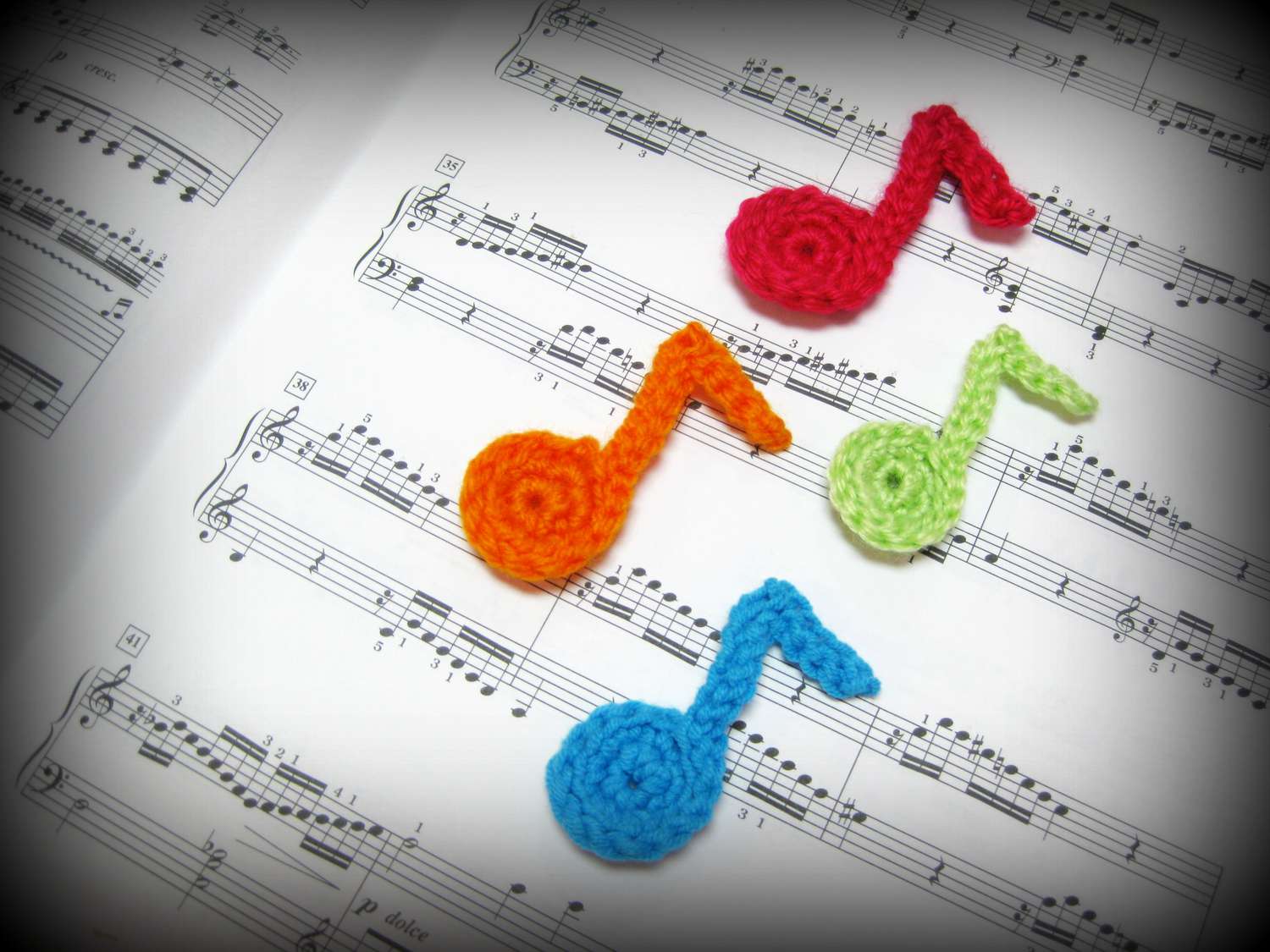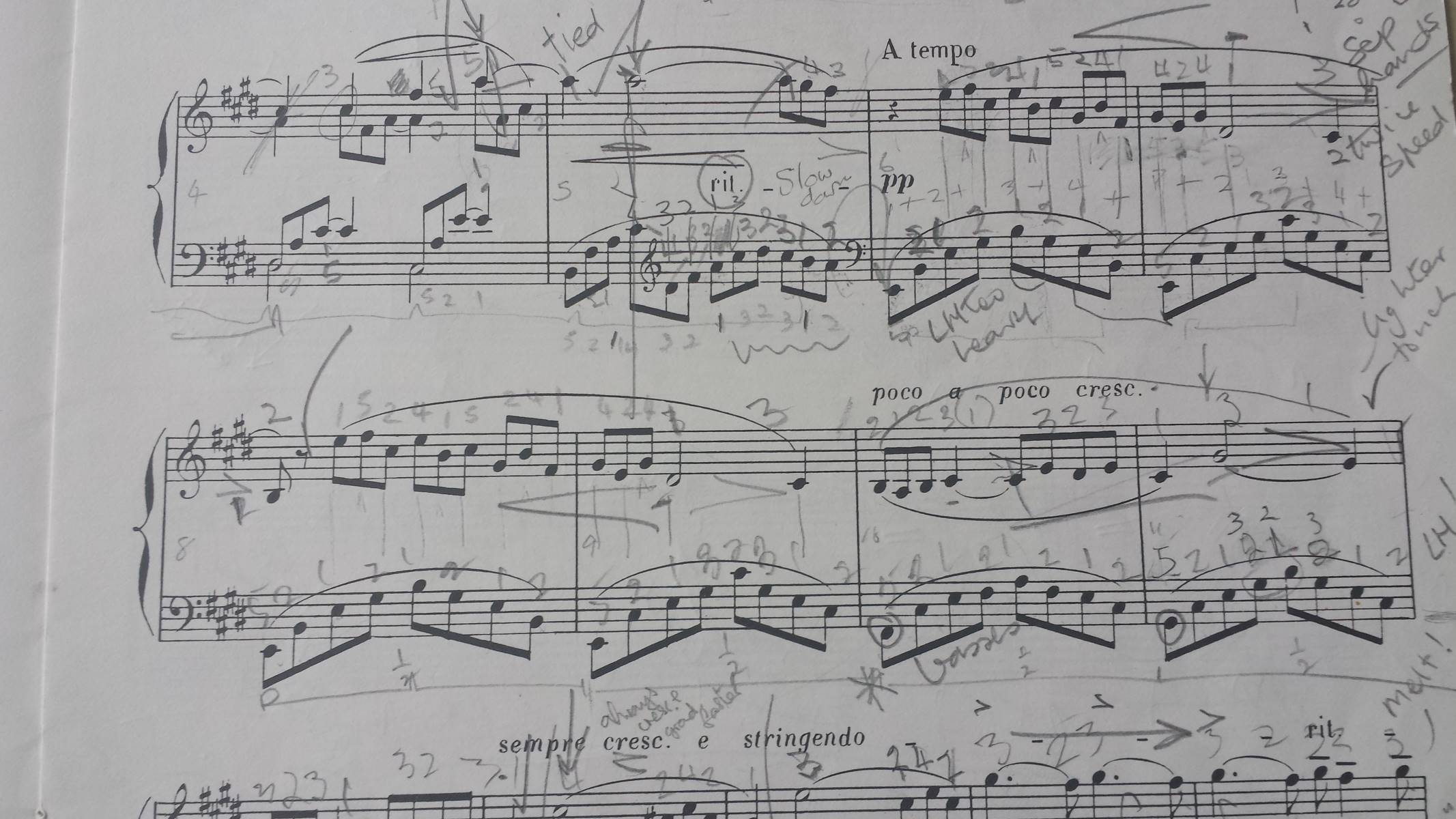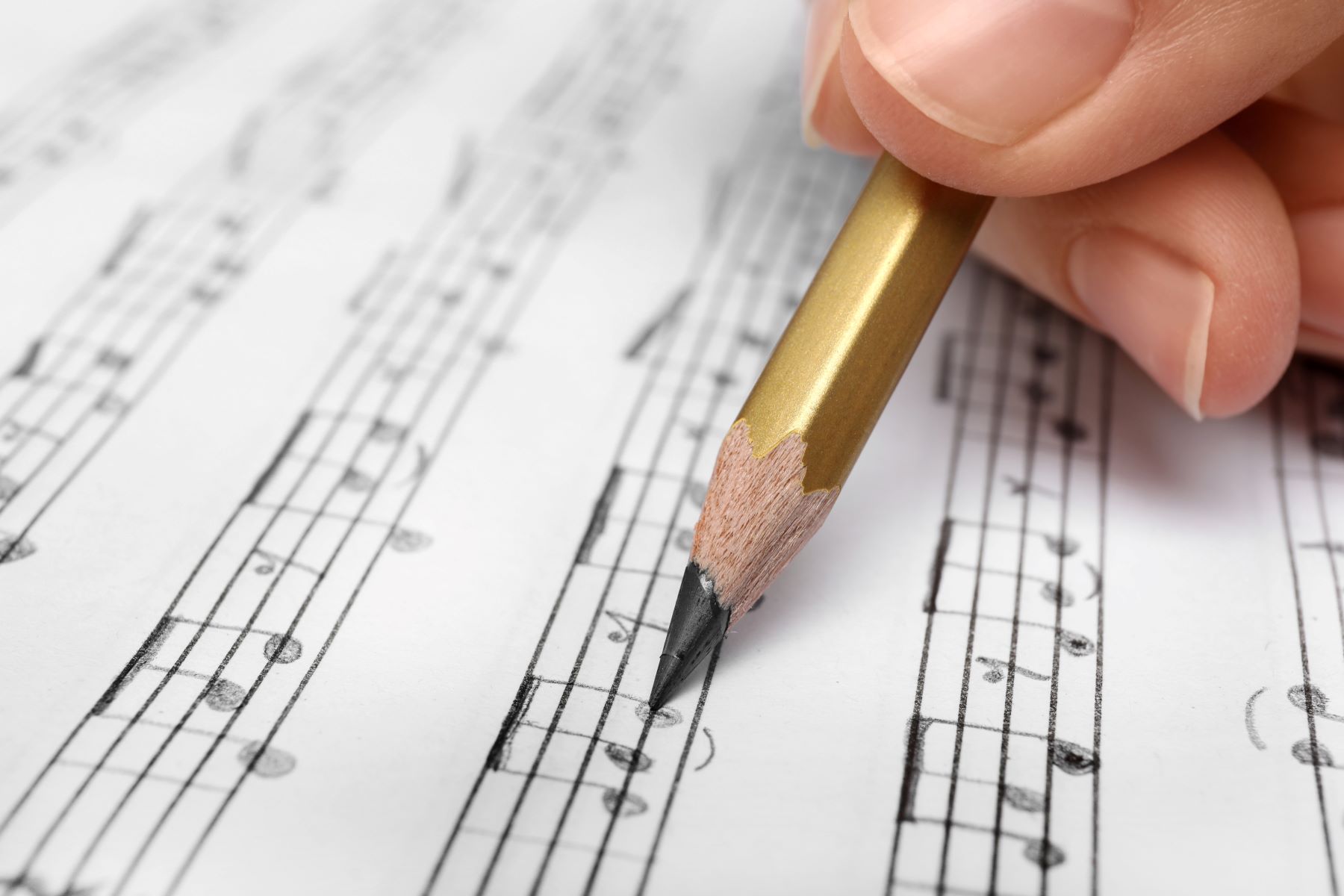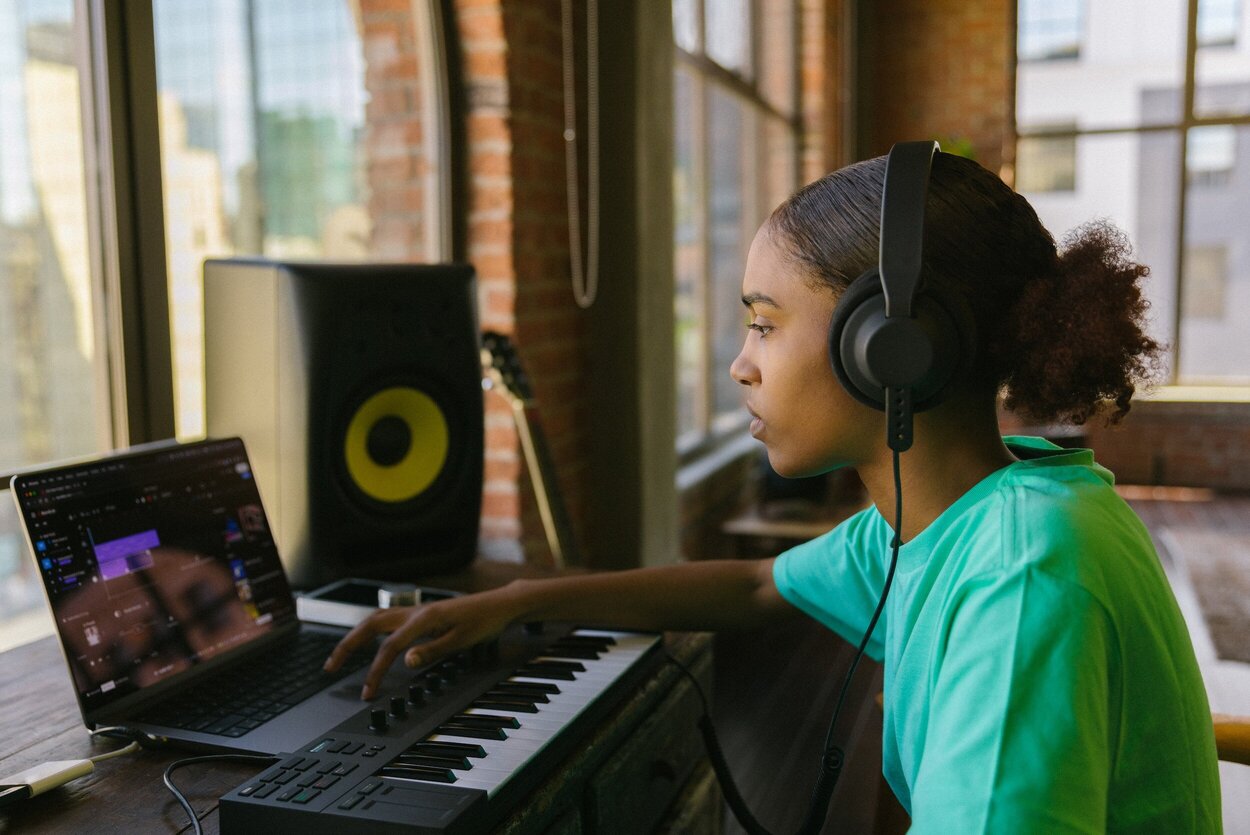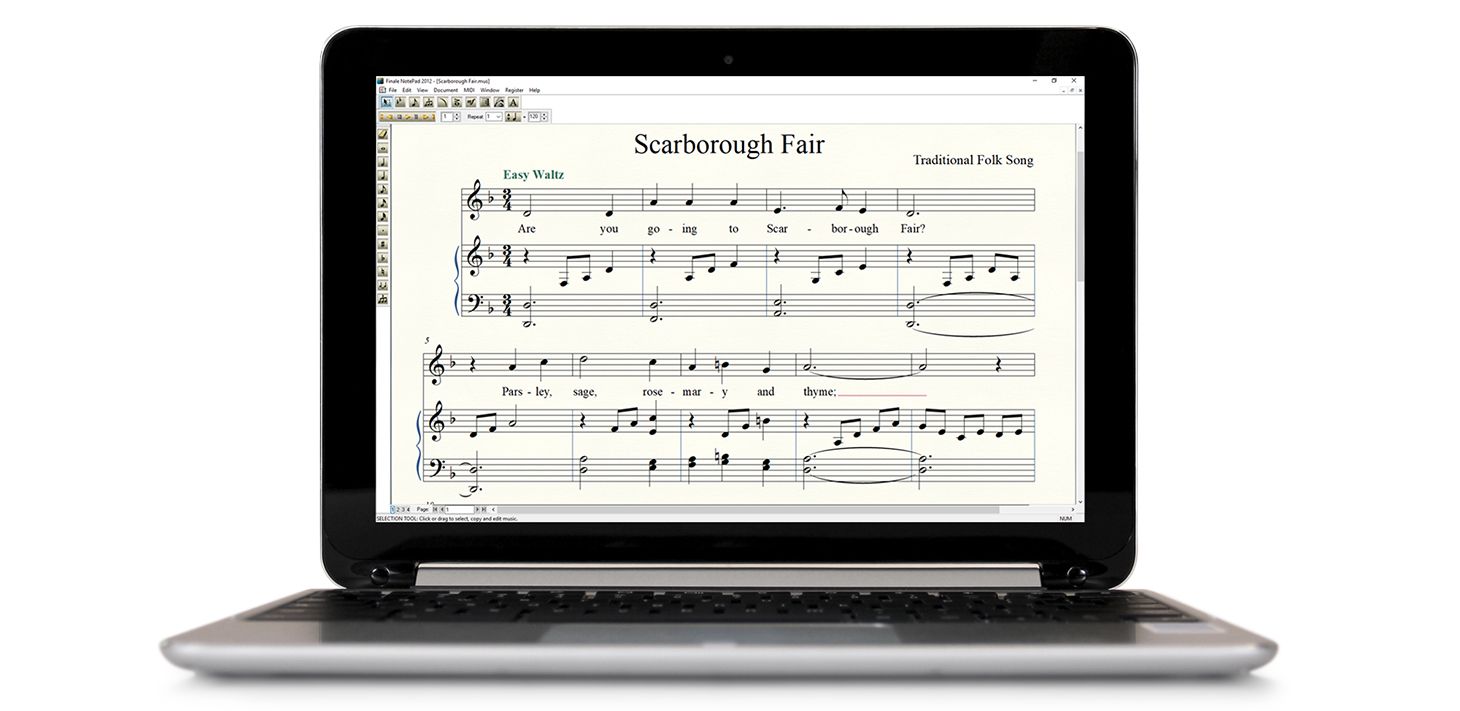Home>Production & Technology>Music Theory>How To Write Music Without Music Theory


Music Theory
How To Write Music Without Music Theory
Modified: February 15, 2024
Learn how to create music without the need for complicated music theory. Develop your own unique sound and express your creativity. Explore music theory basics and unlock your musical potential.
(Many of the links in this article redirect to a specific reviewed product. Your purchase of these products through affiliate links helps to generate commission for AudioLover.com, at no extra cost. Learn more)
Table of Contents
Introduction
Music theory is an essential aspect of understanding and creating music. It provides a framework for musicians to analyze and comprehend the elements that make up a piece of music. However, not everyone has the opportunity or desire to study music theory extensively. The good news is that you don’t necessarily need formal training in music theory to write music.
In this article, we will explore how you can write music without relying heavily on music theory. While having a foundational knowledge of music theory can certainly be beneficial, it is not a requirement for expressing your musical ideas and creating beautiful compositions. By tapping into your musical intuition, experimenting with melodies, harmonies, and rhythms, and utilizing technology, you can develop your own unique musical style.
Whether you are a beginner musician looking to dive into the world of composition or an experienced musician seeking a fresh perspective, this article will provide you with practical tips and techniques to help you write music without being bound by traditional music theory.
So let’s dive in and discover the exciting possibilities that await when you free your creativity from the constraints of music theory!
Understanding Basic Concepts
While writing music without relying heavily on music theory, it is still important to have a basic understanding of some fundamental concepts. This knowledge will serve as a foundation for your musical compositions.
One key concept to grasp is the musical alphabet, which consists of the notes A, B, C, D, E, F, and G. These notes are repeated in various octaves on different instruments. Understanding the order of these notes and their placement on the musical staff will help you navigate your composition.
Another critical aspect is understanding the concept of scales. Scales are a set of notes grouped together in a specific pattern, such as the major scale or the minor scale. By exploring different scales, you can create melodies that evoke different emotions and moods.
Additionally, familiarize yourself with intervals, which are the distances between two notes. Understanding intervals will allow you to create interesting melodies and harmonies. For example, a major third interval creates a bright and happy sound, while a minor third interval creates a more melancholic tone.
Lastly, gain a basic understanding of rhythm. Rhythm refers to the arrangement of sounds and silences in music. It involves understanding the duration and timing of notes and rests. While music theory usually delves into complex rhythmic patterns, you can start by experimenting with simple rhythms to create a strong rhythmic foundation for your composition.
By grasping these basic concepts, you will have the necessary tools to create music even without in-depth knowledge of complex music theory. Remember that the beauty of music lies in its ability to convey emotions and connect with listeners, and these fundamental concepts will help you achieve that.
Harnessing Your Musical Intuition
When writing music without relying heavily on music theory, one of the most valuable assets you have is your own musical intuition. Your intuition is a powerful tool that can guide you in creating captivating melodies and harmonies.
Start by taking some time to listen to different styles and genres of music. Pay attention to what resonates with you and what catches your ear. Allow yourself to be inspired by the music you love and admire, but also be open to exploring new and unconventional sounds.
Experiment with your instrument and explore different chord progressions. Play around with different combinations of notes and chords to see what sounds interesting and pleasing to your ears. Trust your instincts and let yourself be led by the emotions and feelings that arise as you play.
Don’t be afraid to make mistakes and embrace the experimental nature of the creative process. Remember, not every idea has to be perfect or conform to traditional music theory rules. Sometimes, the most unique and innovative music comes from pushing the boundaries and exploring unconventional ideas.
Additionally, make use of improvisation as a powerful tool to tap into your musical intuition. Improvising allows you to freely express yourself without the constraints of structure or pre-determined melodies. It can help you discover new ideas and musical phrases that you may not have thought of otherwise.
Remember that your musical intuition is unique to you, and it is what sets your music apart from others. Embrace and nurture it, and let it guide you in the creative process. Writing music without strict adherence to music theory is an opportunity to let your intuition shine and create something truly authentic and personal.
Experimenting with Melodies
When writing music without relying heavily on music theory, melodies become a central element in expressing your musical ideas. Melodies are the memorable and recognizable lines of music that can captivate listeners and evoke emotions.
One approach to experimenting with melodies is to start by humming or singing improvised melodies without any specific rules or guidelines. Allow yourself to freely flow and explore different melodic ideas without worrying about the technical aspects. Capture these melodies on a recording device or write them down to avoid forgetting them.
Once you have some melodic ideas recorded, listen back to them and analyze what stands out to you. Look for patterns, interesting intervals, or unique rhythmic elements. These can be the foundation for further development and refinement.
Another technique to try is to vary the direction and contour of your melodies. Experiment with ascending, descending, or fluctuating patterns to create a sense of tension and release. Focus on creating catchy motifs or themes that will leave a lasting impression on your listeners.
Consider incorporating repetition and variation in your melodies. Repeating certain motifs or phrases can create a sense of familiarity and catchiness. On the other hand, introducing variations or embellishments to these motifs can add interest and keep the listener engaged.
An effective way to experiment with melodies is to play around with different scales and modes. Try using the pentatonic scale or explore exotic scales for a unique and distinct sound. This can bring a fresh and unexpected flavor to your compositions.
Throughout the process of experimenting with melodies, don’t be afraid to let your intuition and personal taste guide you. Trust your instincts and allow yourself to explore different avenues. Remember, the goal is to create music that resonates with you and communicates your emotions and ideas to the listener.
By embracing experimentation and relying on your own creative instincts, you can discover captivating melodies that are entirely your own, even without relying heavily on music theory.
Exploring Harmonies and Chords
Harmonies and chords play a crucial role in creating depth and richness in music. While exploring harmonies and chords without in-depth knowledge of music theory may seem challenging, there are several approaches you can take to navigate this aspect of composition.
Start by experimenting with simple two or three-note chords. Play around with different combinations and inversions on your instrument. Trust your ear and go with what sounds pleasing to you. You can also explore open chords on a guitar or keyboard to create a fuller and more resonant sound.
Another technique is to explore common chord progressions that you find in popular music. Listen to songs in different genres and analyze the chord progressions used. Pick up on the patterns and sequences that resonate with you and try incorporating them into your compositions.
Utilize the concept of triads, which are three-note chords consisting of a root note, a third, and a fifth. Experiment with different triad shapes and voicings on your instrument to find harmonies that complement your melodies.
Additionally, consider exploring the use of pedal tones. A pedal tone is a sustained or repeated note played against changing harmonies. This technique can add tension and interest to your compositions while maintaining a consistent anchoring note.
If you have access to a digital audio workstation (DAW), experiment with chord generators or arpeggiators. These tools can help you generate chord progressions and explore different harmonies even without extensive music theory knowledge.
Remember that harmonies and chords create the harmonic foundation of your music, supporting and enhancing your melodies. Trust your ear and intuition, and don’t be afraid to deviate from traditional music theory rules. The goal is to create harmonies that complement and evoke the desired emotions in your composition.
By exploring different chord voicings, progressions, and techniques, you can add depth and musicality to your compositions, highlighting your unique style and creativity.
Utilizing Rhythm and Beat
Rhythm and beat are integral components of music that can greatly impact the overall feel and energy of your compositions. When writing music without relying heavily on music theory, exploring rhythm and beat allows you to create dynamic and engaging pieces.
One way to experiment with rhythm is to focus on creating interesting rhythmic patterns. Start by tapping out different rhythms on a table or using a drum pad. Allow yourself to explore unconventional patterns, syncopation, and off-beat accents. Don’t be afraid to break away from typical rhythmic conventions and create your own unique patterns.
Consider exploring different time signatures to add a sense of variety and complexity to your compositions. Experiment with asymmetric time signatures such as 5/4 or 7/8, or try using odd subdivisions within more common time signatures like 4/4.
Another technique is to layer different rhythms and instruments together. Think about how these rhythms can interact and complement each other to create a cohesive and engaging soundscape. This can be achieved by utilizing various instruments, percussive elements, or even incorporating electronic drum patterns.
Embrace the power of silence and rests in your compositions. Intentional pauses and silences can create tension and anticipation, adding a unique dimension to your music. Experiment with different durations of rests and consider their placement within phrases and sections.
When it comes to beat, you can explore different tempos and grooves to find the right feel for your composition. Play around with slower or faster tempos and experiment with different subdivisions of the beat to create unique rhythmic textures.
Utilizing rhythm and beat is all about finding a balance between consistency and variation. Create rhythmic motifs that can be repeated throughout your composition to establish a sense of familiarity, but also introduce variations and improvisations to keep the listener engaged.
Remember, rhythm and beat provide the foundation for your music’s groove and movement. Let your intuition and personal taste guide you in finding rhythmic patterns and beats that resonate with you and bring your compositions to life.
Incorporating Dynamics and Emotion
When writing music without relying heavily on music theory, incorporating dynamics and emotion into your compositions becomes even more critical. Dynamics refer to the variation in volume, while emotion relates to the overall mood and feeling conveyed through the music.
Start by experimenting with dynamics to add depth and expression to your composition. Explore the full range of your instrument, from soft and delicate to loud and powerful. Use dynamics to emphasize certain musical phrases or create contrast between different sections. Remember, dynamics can greatly impact the emotional impact of your music.
Consider the emotional intent of your composition. What do you want your music to convey? Is it joy, sorrow, excitement, or tranquility? Reflect on these emotions as you compose and let them guide your decisions regarding dynamics, tempo, and overall musical expression.
Utilize techniques such as crescendos and decrescendos to gradually increase or decrease the volume of your music. This adds a sense of anticipation or release and can heighten the emotional impact of your composition.
Experiment with articulation and phrasing to bring out different feelings in your music. For example, legato playing can create a smooth and flowing sound, while staccato articulation can add a sense of energy and playfulness. Use these techniques strategically to evoke the desired emotional response.
Explore the use of expressive techniques such as vibrato, bends, slides, or tremolo to infuse your music with emotion and feeling. These techniques can add a personal touch to your compositions, making them more captivating and expressive.
Don’t be afraid to take risks and embrace vulnerability in your music. Allow yourself to be fully immersed in the emotional journey of your composition. Music has the power to convey and evoke deep emotions, and by incorporating dynamics and emotion into your writing, you can create a powerful and impactful musical experience.
Remember to trust your instincts and rely on your own emotional connection to the music. Let your composition be a reflection of your personal experiences and feelings. By doing so, you can create music that resonates deeply with both yourself and your audience.
Structuring Your Composition
Structuring your composition is essential for creating a coherent and engaging piece of music, even when writing without relying heavily on music theory. Consider the following guidelines to help you effectively structure your composition.
Start by outlining the overall form of your composition. Determine how many sections you want to include (e.g., verse, chorus, bridge) and decide on their order. This will give your composition a clear structure that listeners can follow.
Next, focus on creating meaningful transitions between sections. Smooth and seamless transitions help maintain the flow of your music, making it easier for listeners to connect with and understand your composition. Experiment with different techniques such as melodic or rhythmic motifs that carry over between sections, or utilizing common chords to establish cohesion.
Vary the instrumentation and textures throughout your composition to add interest. Consider introducing new elements or removing certain instruments or layers in different sections to create contrast and maintain the listener’s attention.
Pay attention to the pacing and energy of your composition. Think about how you want to build and release tension throughout the different sections. Experiment with gradual increases or decreases in tempo, volume, or intensity to create a captivating musical journey.
Experiment with different songwriting techniques, such as call and response or layering, to add complexity and depth to your composition. Utilize repetition of certain motifs or themes to create familiarity and catchiness.
Consider the concept of dynamics we discussed earlier and incorporate them into the structure of your composition. Create moments of climax and resolution by manipulating dynamics and contrasting quiet, intimate sections with powerful and energetic ones.
Ultimately, trust your intuition and personal taste in structuring your composition. Let the emotions and ideas you want to convey guide your decisions. While music theory can provide guidelines for structure, writing without it allows you the freedom to experiment and create a structure that is true to your vision.
Remember, the structure of your composition is like the framework that supports and shapes your music. By giving thoughtful consideration to its organization, you can create a compelling and well-structured piece of music that captivates your listeners.
Utilizing Technology and Tools
In today’s digital age, technology and various tools can greatly enhance your ability to write music, even without relying heavily on music theory. Here are some ways you can leverage technology and tools to enhance your musical compositions:
1. Digital Audio Workstations (DAWs): DAW software allows you to record, arrange, and produce your music with ease. Take advantage of the virtual instruments and MIDI capabilities to experiment with different sounds and create complex compositions. DAWs also offer features like quantization and tempo adjustments that can help you refine your compositions.
2. Music Production Software and Plugins: Access a vast array of virtual instruments, effects, and sound libraries through music production software and plugins. These tools give you access to a wide range of sounds and textures, allowing you to experiment and expand your creative palette.
3. Music Theory Apps and Online Resources: While the focus of this article is writing music without relying heavily on music theory, having access to music theory apps and online resources can still be beneficial. These tools can provide quick references, chord generators, scale finders, and more to support your creative process.
4. Sampling and Looping: Use samples and loops to add depth and texture to your compositions. By manipulating pre-recorded sounds, you can create unique and compelling musical elements. Experiment with slicing, reversing, and processing samples to create your own distinctive sounds.
5. Collaboration Tools: Online collaboration tools and platforms make it easier than ever to collaborate with other musicians, regardless of geographical barriers. By working with other artists, you can bring fresh perspectives and ideas into your compositions, enriching your musical journey.
6. Virtual Instruments and MIDI: Virtual instrument plugins and MIDI controllers provide a wide range of expressive possibilities. Explore different instrument sounds and experiment with playing melodies, chords, and rhythms using MIDI controllers to bring your compositions to life.
7. Online Communities and Forums: Engage with online communities and forums dedicated to music production and composition. These platforms provide opportunities to connect with fellow musicians, ask questions, share ideas, and receive feedback on your work.
Embrace the technological advancements available to you and find the tools that resonate with your creative process. Remember, technology should be a tool to support and enhance your compositions, allowing you to explore new ideas and push the boundaries of your creativity.
Conclusion
Writing music without relying heavily on music theory opens up a world of creative possibilities. While a foundational understanding of music theory can be beneficial, it is not a prerequisite for crafting beautiful and meaningful compositions. By harnessing your musical intuition, experimenting with melodies, exploring harmonies and chords, utilizing rhythm and beat, incorporating dynamics and emotion, structuring your compositions, and leveraging technology and tools, you can create music that is unique, expressive, and authentic.
Embrace the freedom to explore unconventional ideas and let your intuition guide you. Trust your ear and personal taste, as they are valuable assets in the creative process. Allow yourself to make mistakes and be open to experimentation. Remember, the goal is to create music that resonates with you and evokes emotions in your listeners.
While music theory provides a framework, writing music without relying on it allows you to let your creativity soar. You have the power to shape your compositions and create your own musical language. Whether you’re a beginner musician or an experienced composer, writing music without music theory can be a liberating and exciting journey of self-expression.
So, let go of any limitations and dive into the joy of writing music from your heart and soul. Embrace the beauty and power of your own unique musical voice, and share it with the world.

